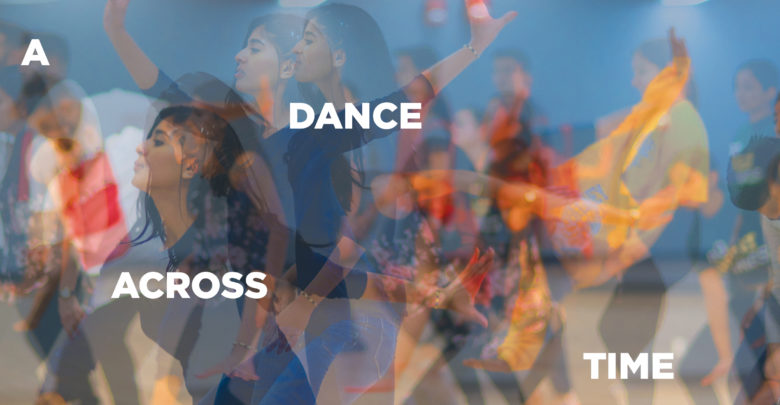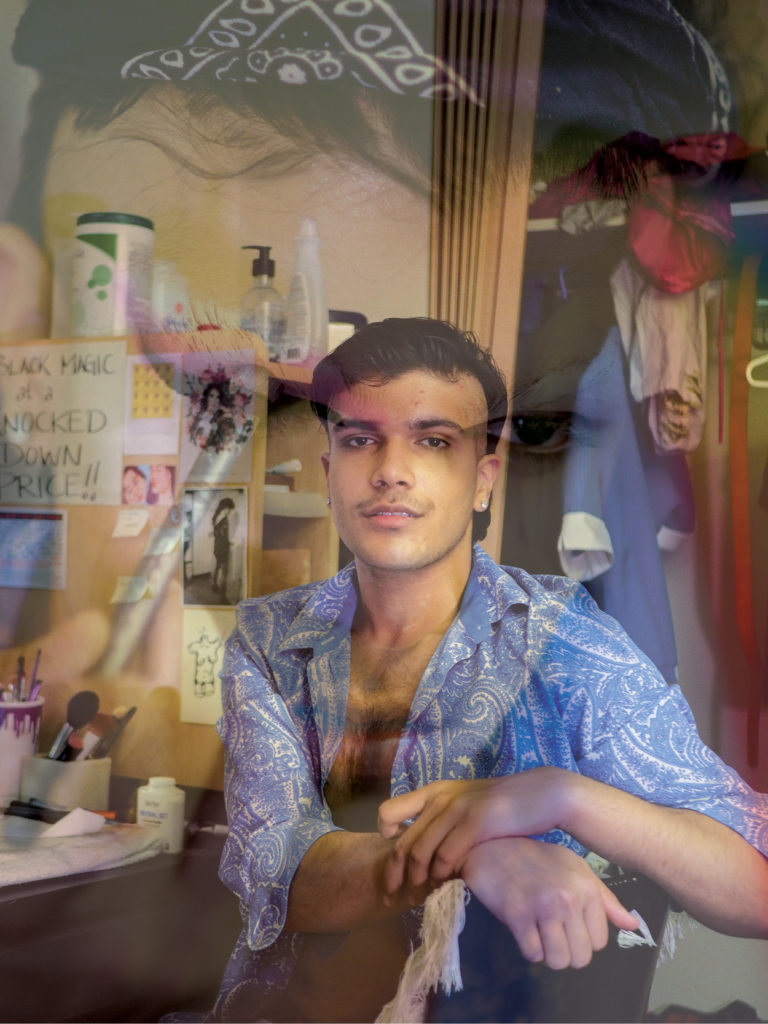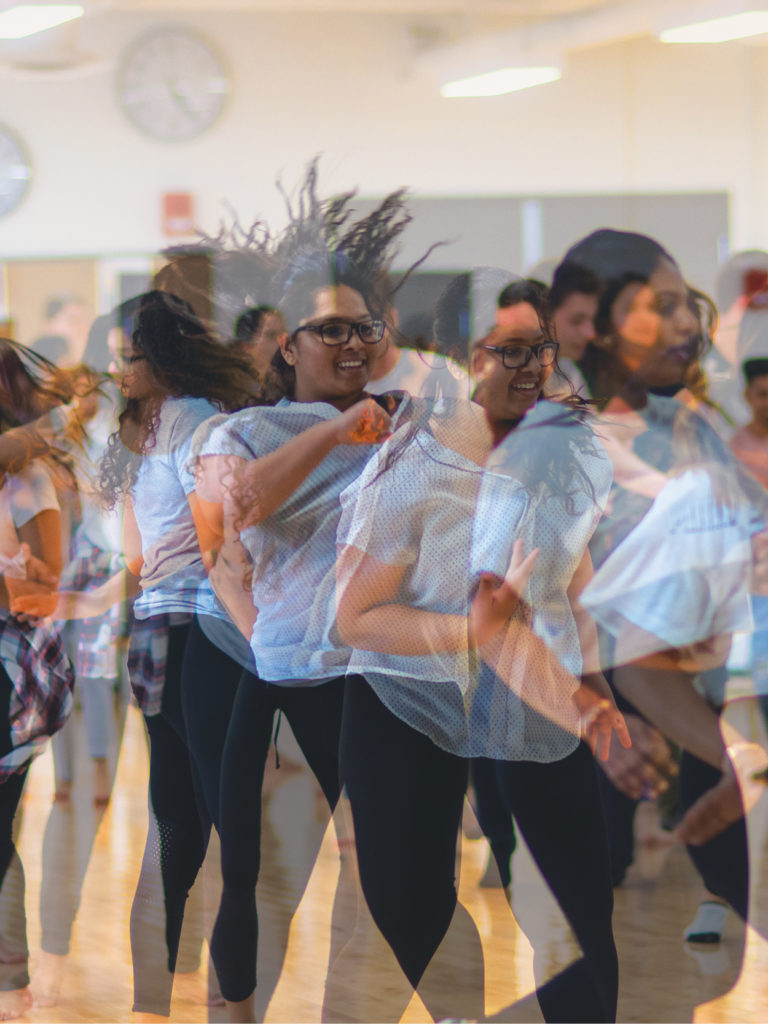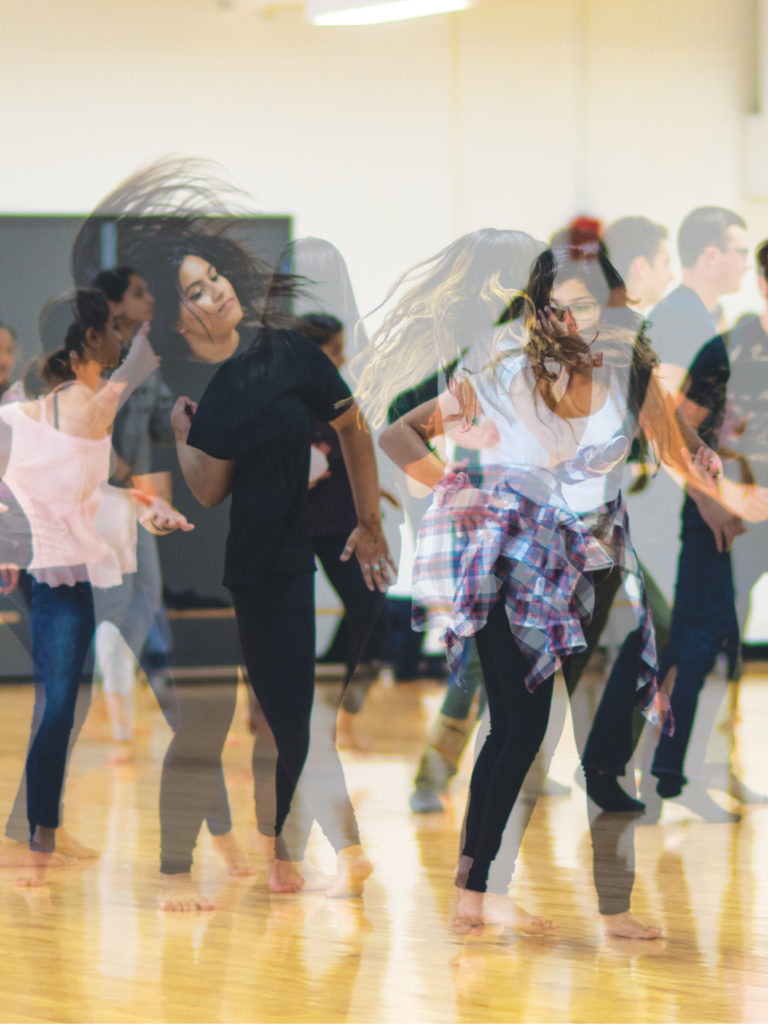A dance across time
 Helen Zhang
Helen ZhangWhen I was in high school, one of my friends turned to me and squealed, “oh my god, you are so cute and innocent, never lose your virginity because then you wouldn’t be innocent anymore and it would ruin you.” At the time, I laughed it off. But, I couldn’t help but think of how my own agency and sexuality was being undermined. I also couldn’t help but think it had more to do with my ethnicity and gender, rather than my personality.
Growing up in Canada within a South Asian household, the gendered expectations were plentiful. I’m a cisgender woman who was born and raised in Edmonton and have dealt with both the white Canadian and the South Asian community pushing their invasive, and sometimes strange ideas about genders all my life.
This isn’t anything new. For all of human history, gender and sexuality have been subjected to the qualms of the dominant group of a society. When it comes to the diasporic — a community, frequently a cultural group, that has been dispersed from its point of origin — gendered expectations become even more complicated and layered.
If you’re an immigrant or a child of immigrants in Canada, you may alternate between two different worlds, cultures, expectations, and even media. There’s the Canadian or American media, and then there’s the media of another country. For me, that other media originated from India in the form of the Hindi film industry, also known as “Bollywood.”
The female heroines or love interests are the most popular aspect of Bollywood films. The second most celebrated part of them is dance. But, what many people fail to realize is the political intersections within Bollywood: dance, gender and sexuality. Films like Devdas and Umrao Jaan have provided complicated retellings of Tawaifs and Devdasis, figures in Indian society whose roles have shifted dramatically over time.
In modern Indian society, the term “Devadasis” refers to women who are sex workers and they are often treated as the lowest of the low. However, this was not always the case — Devadasis were once at the forefront of cultural, artistic and political changes in South Asia, specifically India.
For most people, the image of a beautiful South Asian woman dressed in “traditional” clothing and dancing in front of large groups of men is the first thing that comes to mind when Bollywood is mentioned. “Item girls” are a well-known trope in South Asian media, taking inspiration from nautch girls of the Mughal era. Coming from the noun form of the verb “nach,” a Hindi word meaning “to dance,” the term “nautch girls” is a colonial appropriation. Irrespective of distinctions in gender, class, and location, Anglo-Indians coined the term to reference a whole slew of performers, ranging from drummers, singers, pianists, actors to jugglers, magicians and snake charmers.
Those commonly known as nautch girls fall into two categories: Devadasis and Tawaifs. Devadasis were women who were devoted to the worship of a Hindu deity or temple for their entire life. Tawaifs were highly sophisticated courtesans who catered to Indian nobility. Essentially, Devadasis dealt with the pleasure of deities, while Tawaifs catered to the pleasure of men. Sex was incidental and not assured in either profession, as both Tawaifs and Devadsasis could choose their sexual partners freely. Nevertheless, according to Dr. Charn Kamal Kaur Jagpal, a U of A alumna, Devadasis were temple leaders in cultural arts in South India, while Tawaifs were leaders in the cultural arts in North India. This may seem unrelated to Bollywood, but this cultural history is a major foundation of Hindi cinema.
“Bollywood incorporated the tradition of nautch girls into its dance routines, its romantic plots, and its cinematography in various ways,” Jagpal says. “The Bollywood film industry rose out of a great need to empower a generation of newly-independenced Indians [from the British] with a [form of] entertainment. There was no better inspiration for the perpetuation and preservation of Indian nationalism than the ‘nautch girl,’ particularly the Tawaif.”
Jagpal did her PhD dissertation on nautch girl literature, entitled I mean to win: the nautch girl and imperial feminism at the fin de siècle. According to Jagpal, nautch girls were pre-colonial feminist communities that defied British colonialism in India in an attempt to see the birth of India’s independence.
“[Nautch girls] were militant, political, financially-secure, popular, influential, and charismatic,” Jagpal says. “They assisted in both the first War of Independence in the 1850’s and the final war of India’s Independence in the 1940’s.”
For the British, nautch girls represented what they saw as the negative aspects of Indian culture: eroticism and crudeness. In her M.A. thesis about courtesans in Colonial India, Grace S.E. Howard contends that “these British constructions of gender, ethnicity, and class in India altered ideas and ideals concerning appropriate behaviour, sexuality, sexual availability, and sex-specific gender roles in the [Indian] subcontinent.” Due to their enormous and viable threat to British rule in India, anti-nautch movements were implemented in the 1890s.
Anti-nautch movements were started by the British, but were enacted with assistance from Indians and Indian organizations. Most of the reformers were men who sought the power and authority that nautch girls had. Surprisingly, the Indian women’s movement even supported these reforms. The major reforms behind the anti-nautch movement were the abolishment of temple devotion (for instance, marrying a deity) and outlaw of dance performances by Devadasis.
“The anti-nautch movements of the 1890s left nautch girls destitute. They were forced out of their professions due to the emergence of a derogatory label: prostitutes,” Jagpal says. “Under this label, all performers endured a bad reputation and the arts in India suffered greatly.”
“It’s not the religion itself, but how people or individuals interpret the religion and then impose that power over other people, especially… women and girls.”
Under the British Crown, nautch girls were considered to be sex workers and, eventually, after years of mislabelling and degradation, nautch girls had to resort to commercial sex work to survive. This is why today Devadasis and sex workers are synonymous with each other, even when they originally were conceived as completely separate things.
In 1947, the same year India gained independence, the Madras Devadasis (Prevention of Dedication) Act was passed, which criminalized the marriage of women to deities and outlawed the dance performances by Devadasis. After India gained independence, the need for a Pan-Indian identity became apparent and the film and arts industries was supposed to help create this identity. As a result, Bollywood dance is a combination of classical Indian forms of bharatanatyam and kathak, rural and folk styles such as raslila and bhangra, and popular “Western” styles, including salsa, disco, hip hop, and jazz.
“The Independence movement of post-colonial India saw a resurgence of artistic talents in a newfound class of national dancers, Bharatnatyam,” Jagpal says. “These performers borrowed from — and some even arguably stole — from their nautch girl predecessors.”
According to Jagpal, “Many Bollywood actresses today are considered to be nautch girls because they popularize the Bharatnatyam dance in front of a plethora of nationally-grown Indian and diasporic Indian watchers.”
Bollywood is a relatively new term as well. It’s used as an umbrella term for the Hindi film industry. The term ‘Bollywood’ arose from a need to reach a global audience and to be relatable to the rest of the world. Since people already knew Hollywood, Bollywood naturally stemmed from that.
“When I was a kid, that word didn’t exist, we just called it Hindi movies or Hindi songs,” Ashley Anjlien Kumar, Artistic Director of the South Asian Arts Movement and Director of The Balance Code Yoga and Wellness, says. “The word ‘Bollywood’ really came about based on the massive exporting of Indian films to places all around the world, [to] what the Indians call [the] NRI — non-resident Indian — audience, and to appeal to non-Indians as well.”
Dance has been an integral part of Bollywood since its inception; even the era of silent films featured dance sequences. Kumar has been dancing for 27 years; she is trained in a variety of different Indian dance styles (which she calls South Asian dance styles), but mainly does Kathak, a North Indian classical dance, and Bollywood dance. For Kumar, the historical aspects of South Asian dance are imperative to performing authentically. At the South Asian Arts Movement, Kumar wants to empower the youth through movement. She does workshops called “Beyond Bollywood” all over Alberta, as a way for others to get a glimpse of dance from South Asia. In these workshops, Ashley discusses the history of each of the dance styles. However, for Kumar, the reception of nautch girls and women in Bollywood dance goes beyond the big screen.
“India is changing, more people are dancing.”
“In the Hindu religion in of itself, women are valued and strongly upheld. It’s [men’s] or society’s interpretation of the religion and the culture that has degraded the position of women in terms of Indian classical artwork,” Kumar says. “It’s not the religion itself, but how people or individuals interpret the religion and then impose that power over other people, especially… women and girls. Unfortunately, it’s not [just] that it affects Bollywood today, it affects the whole society.”
This is especially true when considering how gender within Hinduism is fluid and isn’t as strictly constructed as communities tend to make them. In many Hindu epics, such as Vedas, Mahabharata, Ramayana and Puranas, showcase many deities as both male and female at different times or incarnations or may depict themselves as both genders at once (such as Ardhanarishvara). There are dieities who are patrons of third-sex or homoerotically inclined people as well. Yet, within both Western and Eastern societies, followers utilize Hinduism to enforce rigid gender binaries and roles.
“When you think about the songs and the lyrics, when it comes to Bollywood Dance, there’s a lot of stuff related to a woman, a woman’s body, a woman’s physique, a woman’s skin colouring, a woman’s features,” Kumar says.
Kumar finds that many people don’t take the skill of Bollywood dancers seriously, which affects the way her business works.
“Large pockets of the South Asian community are not giving value to the artform when they’re looking at performances,” Kumar says. “Whether that means they’re sitting and talking while a performer is performing or they’re thinking that as a dancer that you should not be paid when you perform or provide a service at certain events.” Kumar finds this frustrating. “For us, for certain people, this is our livelihood.”
For Kumar, she prefers Indian classical dance over Bollywood for its fluidity in gender performance. Indian classical dance typically allowed for both men and women to participate. According to Kumar, the primary leaders of Kathak were all men, so they played both feminine and masculine roles.
“It’s still like that today, although I would say there’s far fewer men learning and performing the Indian classical dance now, which is sad, but I think that has happened over the years for various reasons,” Kumar says.
When it comes to gender and South Asian dance, there’s a clear binary that exists currently. Bollywood reinforces the idea that women should be beautiful, sexual and exist for the consumption of men. Furthermore, men are pressured to occupy negative and aggressive masculine notions of gender.
Sharukh Ali is a U of A alumnus and the current marketing coordinator for the Bollywood Dance Club. During his undergraduate degree, he started the Bollywood Dance Club with a group of his friends as a form of mental relief for students, but also as a way to break gender stereotypes surrounding the perception of Bollywood.
“I hid the fact that I even started this club and that I was doing dancing from my dad for the first full year, because growing up I needed to abide by these gender roles in that boys shouldn’t be dancing, they should be doing other things,” Ali says. “Dancing is strictly for girls so I was scared to tell him and I didn’t tell him because I thought he would make me stop doing the club or send me off somewhere.”
Ali became an executive in his second year and continued to work for the Bollywood Dance Club in secret, that is, until Ali and the group were performing at Heritage Day one summer and his father came across their performance.
“[My father] saw me on stage and I was shocked for a little bit. [I was like] ‘oh God, he’s there,’ but he sat front row and he wasn’t mad,” Ali says. “It was amazing.”
Rones George, a third year Bachelor of Science in Kinesiology student and choreographer for the Bollywood Dance Club, believes Bollywood and the general South Asian culture can perpetuate gender stereotypes. However, she believes that this adherence to binaries is worse here in the West than it is in South Asia.
“I think it’s worse here than back in […] India, there’s more judgmental people here,” George says. “They’re still stuck in that olden times, they don’t really see that India is changing, more people are dancing, you see more different people, like guys, [dancing].”

This isn’t the only change Bollywood dance has seen. Bollywood dance has now been incorporated into drag performances, showcasing the ever-changing nature of drag culture. Sachit Vashisht is a third-year general science student at the U of A by day and a drag queen by night. Their drag persona, Agnes, was created out of a realization that there is space for their drag to be racialized. Agnes incorporates Bollywood into their performances, in order to have an international and global perspective.
“I went from doing irreverent music to doing world music, like a highly racialized performance in drag, so I’ve kept [the name, Agnes]. I just always liked the name, it makes no sense but it’s kinda subversive because you don’t expect a glamorous gender bending brown person to come out, you expect like an old mature cisgender man, this white gay, to come in and do a typical drag race number,” Vashisht says. “My performance style is very eclectic, very energetic, very passionate. I do a lot of different songs but I try to bring an element of joy into it, it’s very resistant to Eurocentric patriarchy.”
Challenges in performing are both racialized and gendered. Because of British colonization and globalization, South Asian media often mimics the Western media. Conversely, shows, such as BBC’s Beecham House, or even movies, like Slumdog Millionaire, portray South Asian women in a stereotypical manner, often as docile and ultra-feminine. They’re soft spoken, passive, and typically the love interest. At a certain point, we are left wondering who’s mimicking who and what purpose that serves. Even progressive shows, like Sense8, fall victim to this trope. South Asians have become stylized to fit the dominant white group’s perceptions.
“There’s a barrier where I have to appeal to the white man somehow in my drag.”
Vashisht tries their best to decolonize their drag performances, although there are some challenges they face when it comes to performing in Canada.
“There’s a barrier where I have to appeal to the white man somehow in my drag,” Vashisht says. “A societal problem [I face is feeling like I have to] apease the white hetero-cis-patriarchy with my drag and it’s really difficult, because I sometimes just want to do a really unapolagetic Bollywood song and I kinda have to police myself, since [performing] is one of my only source of livelihood.”
Vashisht contends that femininity and queer identities are often neglected in Bollywood and Bollywood dance. They see this issue prominently in the film, Queen, which tells the story of Rani, an under-confident Punjabi woman, who travels to Paris by herself for honeymoon after her fiancé calls off their wedding.
“I think it’s very binaric, besides the fact that we literally erased gender queer identities. We’re still stuck on the patriarchal, really really strict gender rules, we see a lot of films where we’re trying to have more women centered in movies like Queen [for example], but we also sort of forget that’s staged, all the music,” Vashisht says. “The entire movie [Queen] is based off of female liberation in a male perspective, women in a man’s perspective and that’s apparent and problematic. We somewhat associate femininity with the patriarchy and we kind of ignore how women can be resilient and powerful within Bollywood cinema.”
Personally, I find it difficult at times to watch both Bollywood and Hollywood because of their representations of women. Either I feel self-conscious for not having the same physical features, or I feel pressure to be “softer.” Most of the time, these representations of South Asian women, both in American and Indian cinema, make me feel more inadequate. I’m not light enough, quiet enough or sexual enough. I can never be a proper Canadian or a proper Asian — I’ve become too rebellious and distant for both communities. This relationship becomes even more complex when other intersections are considered. Being in between two cultures can also be a good thing — you gain another perspective and you can experience multiple cultures at once.
“I can never be a proper Canadian or a proper Asian — I’ve become too rebellious and distant for both communities.”
Nevertheless, the feeling of being caught between two worlds that may never fully accept who we are or what we want to be can be isolating. Despite these adversities, the South Asian diaspora continue to resist societal pressure and create new experiences for themselves and for others around them. From the nautch girls of the Mughal era to the drag queens, art and dance carry on the tradition of resistance.
At the same time, they create a community where like-minded individuals can be who they are. Even dancers in our own Edmonton community are trying their best to create that space for themselves and for others. So take notes from them: push through and do what you feel is right. Challenge the patriarchy and its gender binaries, because it wasn’t always like how it is now. It’s not easy, but it’s your life.






